
Archon: The Light and the Dark is a 1983 video game developed by Free Fall Associates and one of the first five games published by Electronic Arts. It is superficially similar to chess, in that it takes place on a board with alternating black and white squares, but instead of fixed rules when landing on another player's piece, an arcade-style fight takes place to determine the victor, and each piece has different combat abilities. The health of the player's piece is enhanced when landing on a square of one's own color.
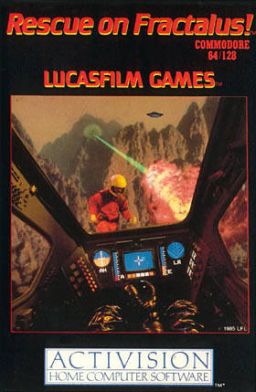
Rescue On Fractalus! is a space combat simulator video game created by Lucasfilm Games. It was originally released in 1985 for the Atari 8-bit computers and Atari 5200 console, then ported to the Apple II, ZX Spectrum, Amstrad CPC, Tandy Color Computer 3, and Commodore 64. The player flies a space fighter near the surface of a planet, with the goal of rescuing downed pilots. The terrain is generated via fractals, from which the eponymous planet and game title are taken.

Choplifter is a military themed scrolling shooter developed by Dan Gorlin for the Apple II and published by Broderbund in 1982. It was ported to Atari 8-bit computers the same year and also to the VIC-20, Commodore 64, Atari 5200, ColecoVision, MSX, and Thomson computers.
Combat flight simulators are vehicle simulation games, amateur flight simulation computer programs used to simulate military aircraft and their operations. These are distinct from dedicated flight simulators used for professional pilot and military flight training which consist of realistic physical recreations of the actual aircraft cockpit, often with a full-motion platform.

Ace of Aces is a combat flight simulation game developed by Artech Digital Entertainment and published in 1986 by Accolade in North America and U.S. Gold in Europe. It was released for the Amstrad CPC, Atari 8-bit computers, Atari 7800, Commodore 64, MSX, MS-DOS, Master System, and ZX Spectrum. Set in World War II, the player flies a RAF Mosquito long range fighter-bomber equipped with rockets, bombs and a cannon. Missions include destroying German fighter planes, bombers, V-1 flying bombs, U-boats, and trains. In 1988, Atari Corporation released a version on cartridge for Atari 8-bit computers styled for the then-new Atari XEGS.

F-15 Strike Eagle is an F-15 Strike Eagle combat flight simulation game released for Atari 8-bit computers in 1984 by MicroProse then ported to other systems. It is the first in the F-15 Strike Eagle series followed by F-15 Strike Eagle II and F-15 Strike Eagle III. An arcade version of the game was released simply as F-15 Strike Eagle in 1991, which uses higher-end hardware than was available in home systems, including the TMS34010 graphics-oriented CPU.

Star Trek: Strategic Operations Simulator is a space combat simulation arcade video game based on the original Star Trek television program and movie series, and released by Sega in 1983. Star Trek uses color vector graphics for both a 2D display and a 3D first-person perspective. The player controls the Starship Enterprise and must defend sectors from invading Klingon ships. The game includes synthesized speech
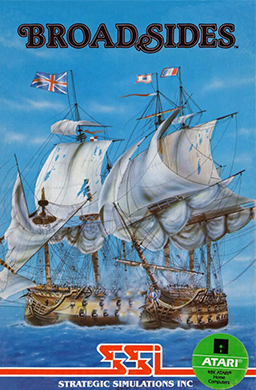
Broadsides is a video game that simulates naval combat in the Age of Sail. It was published by Strategic Simulations in 1983 for the Atari 8-bit computers, Apple II, and Commodore 64.

Mr. Robot and His Robot Factory is a platform game created for Atari 8-bit computers by Ron Rosen and published in 1983 by Datamost. The music was composed by Gary Gilbertson using Philip Price's Advanced Music Processor, while the title screen was drawn by Art Huff. It was ported to the Apple II by Robert McNally and to the Commodore 64.
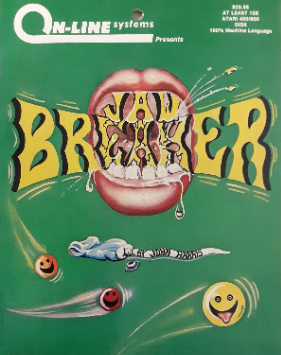
Jawbreaker is a Pac-Man clone programmed by John Harris for Atari 8-bit computers and published by On-Line Systems. Released in 1981 before an official version of Pac-Man was available, it was widely lauded by reviewers and became a major seller. The story of its creation and Harris's Atari 8-bit implementation of Frogger form a portion of Steven Levy's 1984 book, Hackers: Heroes of the Computer Revolution.
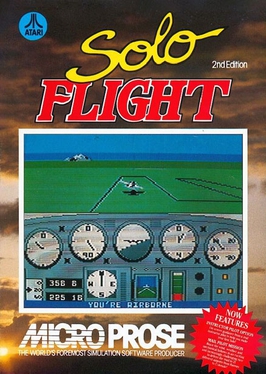
Solo Flight is a third-person flight simulator written by Sid Meier for Atari 8-bit computers and published by MicroProse in 1983. It includes a game mode called Mail Pilot. This was the fourth flight simulator Meier wrote for MicroProse—following Hellcat Ace, Spitfire Ace, and Wingman—and the first which did not involve aerial combat.

In video games, first-person is any graphical perspective rendered from the viewpoint of the player character, or from the inside of a device or vehicle controlled by the player character. It is one of two perspectives used in the vast majority of video games, with the other being third-person, the graphical perspective from outside of any character ; some games such as interactive fiction do not belong to either format.

F-16 Combat Pilot is a 1989 F-16 fighter flight simulator created by British software company Digital Integration Ltd. for Amiga, Atari ST, DOS, Commodore 64, Amstrad CPC and ZX Spectrum. It is considered as one of the first combat flight simulators to have a dynamic campaign environment. While the graphics, scenery and audio are quite sparse and basic, the instruments and flight dynamics of a F-16C Fighting Falcon are fully featured and modeled.

Ace is a combat flight simulator video game published for the Commodore 64, VIC-20, and Plus/4 in 1985 by Cascade Games. It was ported to the Amstrad CPC, Amstrad PCW, Amiga, and ZX Spectrum.
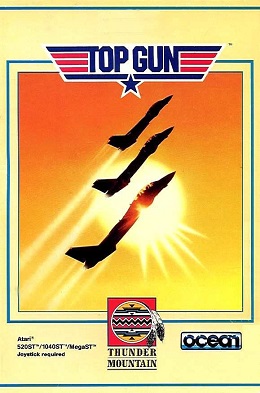
Top Gun is a 1986 combat flight simulation game based on the film of the same name. It was developed and published by British company Ocean Software, and was released for several computer platforms. In the United Kingdom, it was released for Amstrad CPC, Commodore 64, and ZX Spectrum in December 1986. The following year, it was released for Atari ST. In the United States, it was published by Thunder Mountain. In 1989, it was published by The Hit Squad as a budget re-release for ZX Spectrum and Commodore 64.
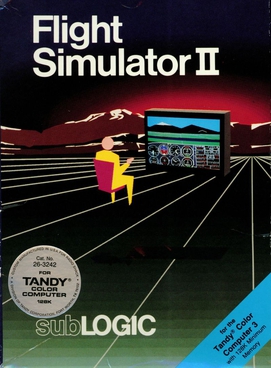
Flight Simulator II is a video game developed by Bruce Artwick and published by Sublogic as the sequel to FS1 Flight Simulator. It was released in December 1983 for the Apple II, in 1984 for Atari 8-bit computers and Commodore 64, in 1986 for the Amiga and Atari ST, the Atari XEGS as a pack-in title in 1987, and in August 1988 for the Tandy Color Computer 3.
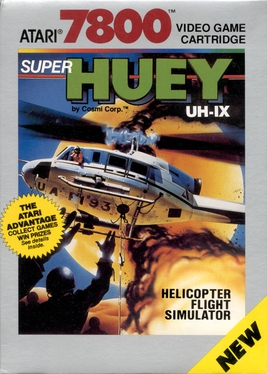
Super Huey UH-IX is a helicopter combat flight simulation game published by Cosmi Corporation. Originally released for the Commodore 64 in 1985, it was ported to the Amiga, Apple II, Atari ST, Atari 8-bit computers, and MS-DOS. Atari Corporation published an Atari 7800 version in 1989.

Hellcat Ace is a 1982 combat flight simulator video game written by Sid Meier for Atari 8-bit computers and published by MicroProse as their first program. The game was an immediate hit and led Meier to write several new releases for the Atari home computers. Ports of Hellcat Ace were released for the Commodore 64 in 1983 and IBM PC compatibles in 1984.

Spitfire 40 is a combat flight simulation video game developed by Novotrade and published by Mirrorsoft for the Commodore 64 in 1985.
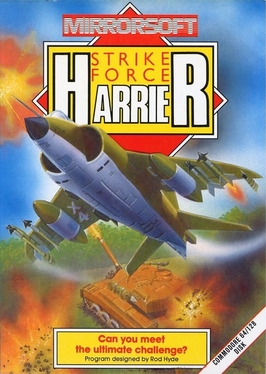
Strike Force Harrier is a 1986 combat flight simulation video game designed by Rod Hyde and published by Mirrorsoft for the 8-bit home computers. 16-bit ports were released later.




















